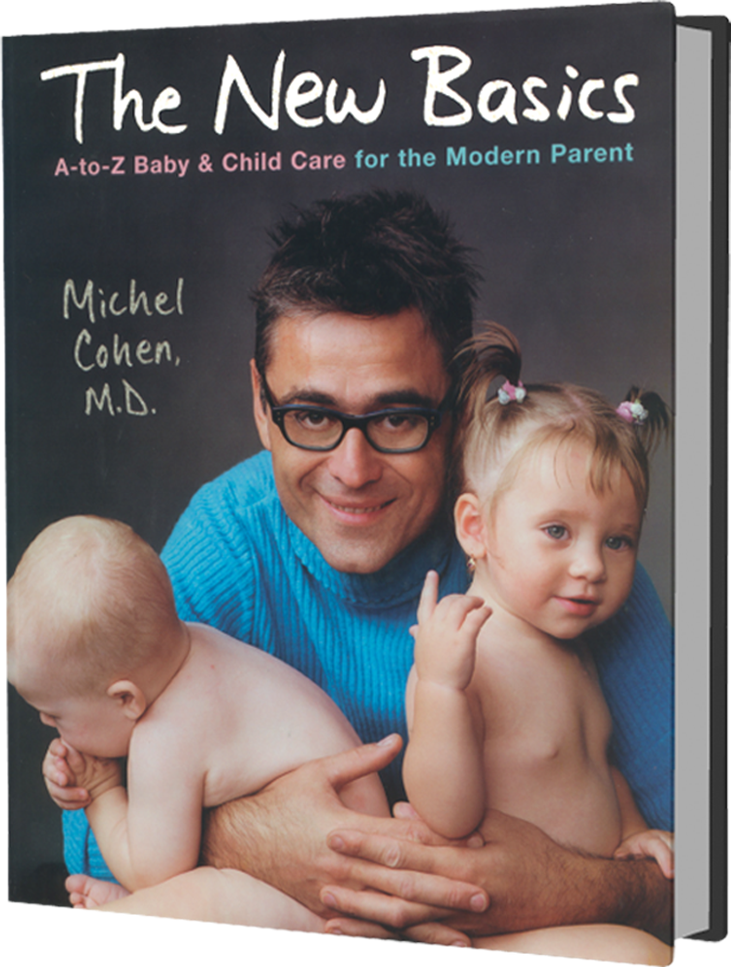
Developmental Milestones
Encouraging children to develop according to a schedule would be admirable if children were a figment of your imagination. They are real, however, and they are individuals who tend to develop at their own pace. The developmental process is extremely complex, of course, but suffice it to say that babies develop according to nature’s clock. Children are not perfectly designed robots who change and reach milestones in lockstep with one another. A parent’s reaction to her child’s pace of maturation is, in the end, a matter of philosophy. Does it really matter if one child is a chatterbox at eighteen months while another can barely say “dada” or “mama”? By the time they’re three, both of those kids will be able to converse. For that reason, guidelines are not tremendously useful.
That said, I understand how much importance my patients and many other parents place on the exciting milestones in their children’s lives and when they occur. So here’s a short outline of what you may see happening at specific times over the course of the first year. As each child is different, remember to wait patiently before drawing conclusions about yours.
Birth Through the First Couple of Weeks
It’s hard to know what newborns are supposed to do, since they rarely want to do much. The first week or so is called the suppressive stage. Overwhelmed by all the new stimulation and overtired from the delivery, Lucy sleeps most of the time. When she wakes up, she either looks around for a while and goes back to sleep, or she cries for food or comfort. By this point, she can already respond to noise and scan her surroundings, taking special interest in the face of the person who feeds her. In terms of strength, she has more muscle tone than you may think. She can hold her head up, and she may even be able to pull her body partly upright, but she’s no showoff; she’s too busy sleeping all the time.
From a Couple of Weeks to Three Months
This is called the adaptive stage, and this is when perfect little babies tend to turn into whiny creatures as they encounter unfamiliar stimuli of all types and attempt to make sense of the world. As a result, Lucy will be more awake but not necessarily any happier. Noise, light, touch, hunger, her full belly (to name a few)—all the new sensations she’s experiencing rattle her. As part of the process, however, she’s learning that the noise will stop, the lights will dim, her full belly will empty, and her empty belly will soon be filled again. Her neck is even stronger, and she is capable of more facial expressions. She has better coordination, responds to visual and auditory stimuli, and loves looking at faces, which helps her learn to smile and laugh. This increased muscle control can also have negative implications: It means Lucy can cry louder and longer. At this point, your shared goal is to get through this stage one day at a time and make it to the next phase. Read on.
Three to Six Months
The adaptive stage lasts for a couple of months, and then, as if overnight, Lucy becomes the kind of baby you see in advertisements: happy, cooing, laughing, playing. She has grown accustomed to the notion of being alive, especially since she’s being served hand and foot by an all-powerful parental force. Since basic needs (food, cleanliness, and comfort) are taken care of, Lucy can start exploring the world and not only take in stimuli but also produce new ones. This is called the exploratory stage. Her first tool for exploration is her mouth, and the first thing she explores is her hands, since they’re right there at the ends of her (still very short) arms. In terms of physical development, she’s exhibiting increased neck and trunk strength and greater manual dexterity.
Six to Eight Months
Much of the development here focuses on the hands. At around six months of age, Lucy can grab objects and look at them before she shoves them into her mouth and eventually throws them on the floor. Because her drive to explore exceeds her understanding of the world, she may become overstimulated and frustrated, which can lead to early tantrums. Physically, she can sit up if you help her balance, and she may or may not be able to roll over on her own. She’s starting to coo (though some babies are quieter than others) and to sustain interest in objects. With your help, she is even able to stand up on her increasingly strong legs.
Eight to Ten Months
Around eight months, your time with a happy, stationary baby comes to an end, as Lucy’s interest in exploring intensifies. She now explores her own voice by babbling and observing the effects her babbling has on you. She grabs everything in sight and performs a thorough visual analysis before putting everything she can into her mouth. She can sit steadily, and when she gets bored, she attempts to crawl or drag herself across the floor in her own style. As much as she wants to go to new places, she does not necessarily want to meet new people; as a matter of fact, she’d rather not [See: Separation and Stranger Anxiety].
Ten to Twelve Months
Lucy is intent on standing up, and she’s starting to think about walking, something she gets a taste of when she’s cruising around the house, holding on to the furniture. You may recognize some words emerging from her babble, especially the ones that identify you. Her motor coordination is even more refined, and her thumbs have begun to come into play. She may also add waving to the repertoire.
Twelve Months
Lucy stands up steadily on both legs, cruises, and sometimes even walks under her own power. “Mama” and “dada” (or other two-syllable words) anchor her growing vocabulary, though these words do not necessarily refer to her beloved parents. She may be able to feed herself, or try to, and she probably demonstrates an appreciation for music, or at least clapping.




 MEDICATION DOSAGE
MEDICATION DOSAGE

